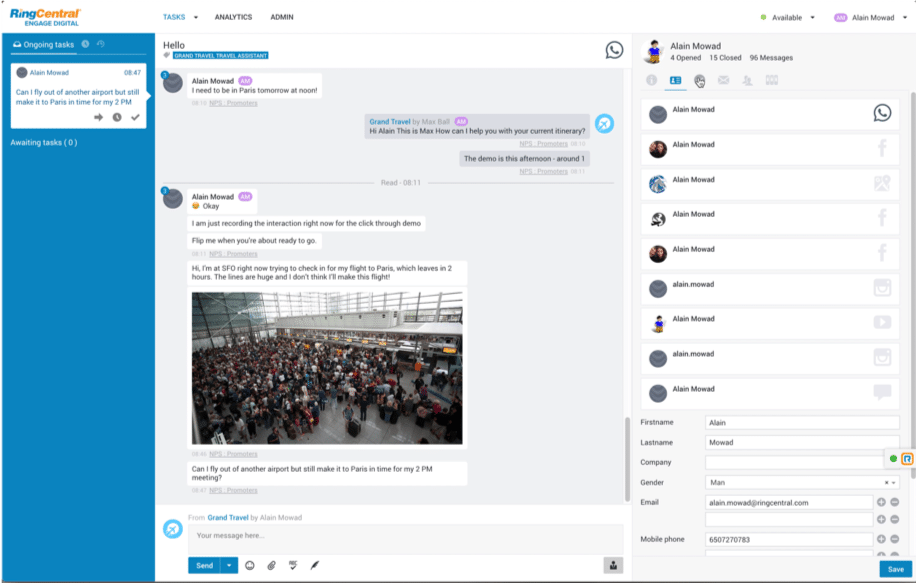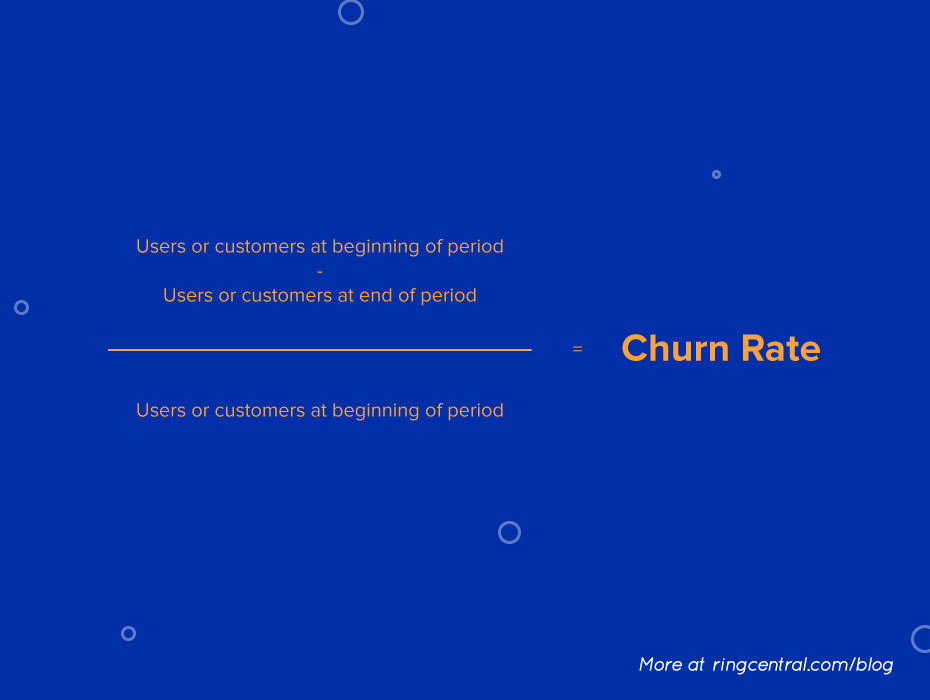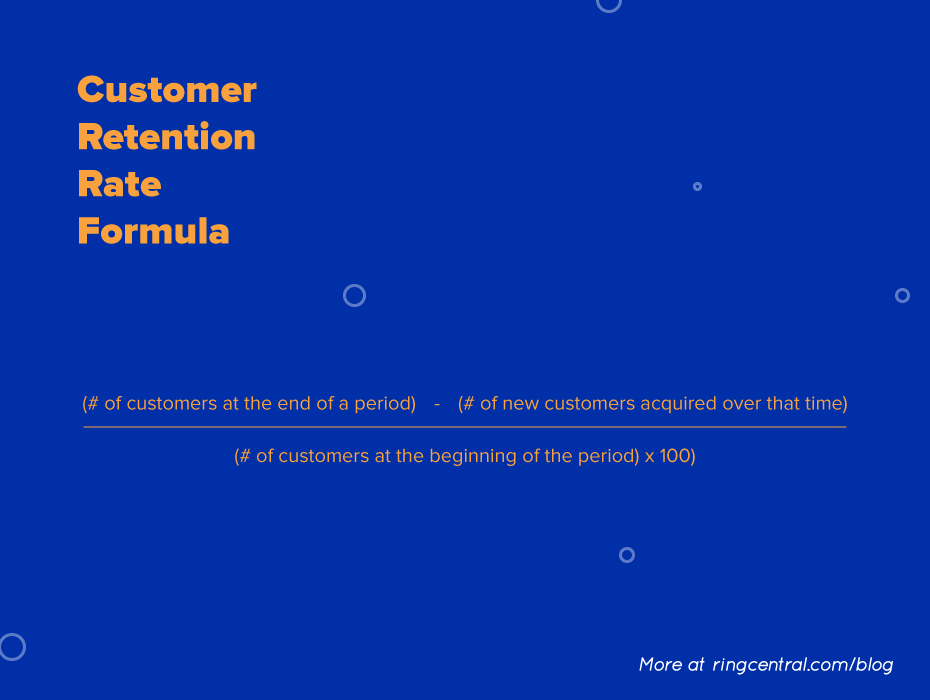Every business has its own language, and customer service is no different. While some of the terminology used in customer service is straightforward, not every term is easily recognizable.
If you’re going to navigate the waters of the customer service world, it’s best to have a grip on the customer service vocabulary so you can do more than just tread water.
Below, we’ve put together a list of 70 terms that you can add to your customer service vocabulary that’ll help you decode the (quickly-changing) world of customer service.
Not only are these terms just good to know, they’ll also help you understand how to communicate and connect with your customers in a more meaningful way.
⭐️⭐️⭐️⭐️⭐️ Ready to offer 5-star customer service? Get strategies for every stage of the customer journey with this free eBook.
Agent
This is a common name for someone on the customer support team who’s responsible for incoming support tickets and supporting customer interactions through the phone, email, messaging, and social media. Not to be confused with Secret Agent.
Agent collision
“Agent collision” can happen when two agents work on the same support ticket and information is duplicated or replaced with incorrect data. This can happen if you have multiple customer profiles for the same person by accident (which happens pretty frequently), and it’s best to have a contact center software that streamlines all your customer information and past conversations. For example, this is how it works in RingCentral:
Agent console
This is the customer service agent’s homescreen or the main parts of the software that they use to help customers:

An example of what an agent screen looks like in RingCentral
Agent experience
This refers to how the agent and support staff working with them feel about their job and working environment.
Agent experience is important to track as it affects how well your customers are served (happy agents make for happy customers)—and determines the longevity of your agent and their career path, both which affect your company’s bottom line.
Agent life cycle
An agent’s life cycle describes the relationship between the agent and the company they work at, starting with the agent’s recruiting process all the way through to the agent leaving the company for another job.
Tracking agent life cycles will help your business better understand how to recruit as many awesome agents as you can (and what you can do to best train and support them).
Automatic call distribution
A type of software or program that manages a business’s incoming calls and routes them to the right person or department. Also known as an automatic call distributor system.
Automated customer service
A type of customer service that’s done automatically through technology like an app or platform, with little to no human intervention. For example, having an interactive voice response menu (IVR) is a type of automated customer service.
This is a hallmark of online customer service.
Backlog
This is the amount of unresolved customer support requests in a given amount of time. Kind of like Chris Pratt’s email inbox.
Benchmarking
Benchmarking is the comparison of your company’s performance against the performance of your competitors. This helps you know where you stand performance-wise against competition and what you can do to improve that position and earn maximum bragging rights.
Brand
Your brand is how your company is perceived. There are lots of sayings from lots of marketing experts about brand, but one of our favorites is, “Your brand is what people say about your company when you’re not in the room.” It’s not just a logo or a color palette or a typeface.
A customer service team has a huge impact on brand, because they directly affect customers’ perceptions of a company. Learn more about brand awareness.
Bug
A bug is an issue with a product, service, or system that typically requires your company’s internal IT or engineering team to resolve. If something is “buggy”, it means there is a glitch in your internal system that needs to be fixed—and pronto! But first, you may want to try and turn it off and turn it back on.
Business hours
The hours of operation that a company is open for business during any given day and can provide support to its customer base. Not to be confused with “business seconds” which is the amount of seconds a business is open on a given day.
Business process outsourcing (BPO)
This process involves assigning a particular internal process to an external or outsourced party. Outsourcing some of your business processes will allow you to grow more rapidly—without sacrificing quality in your service standards.
But don’t confuse this with technical support outsourcing! One example of business process outsourcing would be to outsource your social media marketing to an entity outside your immediate business. They can keep your Facebook page humming and you can focus on more immediate and bigger issues.
Call center
Now more commonly referred to as a contact center. The physical location where a large volume of calls from customers can be taken, often using some sort of computer automation software. If you’ve ever tried to cancel your Comcast account, you probably know what this is.
Case priority
The priority level assigned to a case to determine urgency and how quickly it should be assigned to and addressed by the agent. These are typically classified in Mild, Medium, Hot and Fire, like Taco Bell hot sauce packets (not really, but you get the idea).
Change management
This is the process of overseeing and implementing changes within a company that could affect organization, software, or other functions. Basically, a nicer version of what Senator Palpatine did in the Star Wars prequels (if you know, you know).
Channels
These are all the possible ways your customers can contact you, including phone, email, chat, social media, etc. The more communication channels available to reach you, the happier your customers will be (usually).
Churn
The loss of clients or customers over a certain period of time. Womp womp.

Customer experience
This describes customers’ interactions and overall experience over their lifetimes with the company. By evaluating customer experience, your company will better be able to meet their needs and serve them in a more consistent, thoughtful way.
Customer relationship management (CRM)
CRM is an approach to managing a company’s interaction with current and potential customers. It uses data analysis about customers’ histories with a company to improve business relationships with customers, specifically focusing on customer retention and ultimately driving sales growth. A pretty hot buzzword these days.
A CRM can also refer to a tool or program that’s used to, you guessed it, manage customer relationships. These are typically used by sales teams and perceived as sales software, but can also function as customer service software for customer support teams.
Customer retention
Pretty self-explanatory. Customer retention can refer to a team or the processes a business has to retain, or keep, its customers over time (measured as “customer retention rate“). Kinda like water retention, but more desirable.

Customer satisfaction (CSAT)
This metric helps score customers’ overall happiness with the company as well as get a sense of their loyalty to the company. This information is usually gathered via a survey after services are rendered to help track a customer’s overall experience, allowing for fine-tuning along the way.
Empathy
The ability to understand and feel another person’s feelings; being able to empathize with a customer’s frustrations and successes allows for a more thoughtful customer/agent interaction and builds brand loyalty. Learn more about empathy exercises.
End-of-life policy
Slow your roll—it’s not “that” kind of policy. This is the term used for when a product or service is at the end of its usefulness. When this happens, the company should determine when to stop selling and supporting this product in order to move on to supporting more efficient products.
Escalation management
Escalation management refers to identifying tickets that demand more attention and assigning them to agents who can help resolve them quickly. You know, for when Karen wants to speak to the manager, it’s time to escalate that ticket…and quick.
Feature
This is a specific characteristic, often in a product, that satisfies a need for a customer in a particular way.
Feedback loop
This is a tool in which the customer can communicate how their experience with the company is going and how they believe the company could improve. A closed feedback loop allows information from the customer to go directly back to the company so that internal adjustments can be made—all while providing feedback back to the customer. What goes around literally comes around. Learn more about customer feedback.
First contact resolution (FCR)
This term used to be called first call resolution (now there are other ways of getting in touch with a company beyond calling), and refers to when a customer’s needs are so effectively resolved the first time that there is no need for them to follow up. High FCR rates should be the goal of every company’s interactions with customers.
First reply time
This is the amount of time that passes between when a ticket is made and when first contact with the customer responding to said ticket occurs. The goal is to have a quick reply time, allowing your customers to not be left waiting to hear an answer to their question for long. No one likes the ‘90s hold music on the other line, so don’t be that guy and leave your customer hanging.
Gamification
This is using gaming aspects, such as leaderboards, point systems, and achievement badges, to encourage certain agent behaviors.
Help desk
A typical help desk can effectively perform several functions. It provides a single (or multiple) point of contact for users to get help with troubleshooting, getting answers to questions, and solving known problems. A help desk generally manages its requests through the use of software such as issue tracking systems.
Inbound customer service
Simply put, this is the traditional form of customer service, where the customer calls in (aka “inbound calling“) for help or to ask for information about a product or service. When speaking to a Gen Z’er, just remind them that at one point, people did more than just text.
Issue tracking system (ITS)
Also known as a help desk ticketing system, ITS allows your company to track all issues (or technical bugs) until they are resolved completely. Big brother is watching…but it’s a good thing.
Key performance indicator (KPI)
These are data-driven goals that show how well a team is meeting their goals. Often they’re packaged together into a dashboard or scoreboard (y’know, like at a sporting event).
Knowledge base
This is an organized online storehouse of information that serves as a resource for customers and agents seeking answers to common questions and issues. A knowledge base often complements a company’s help desk and can include articles, news, product information, and answers to frequently asked questions. Basically a second brain for your business. (Very common in B2B customer service.)
Knowledge-Centered Service
Knowledge-Centered Service is a service delivery method that focuses on knowledge as a key asset of the organization implementing it. Development began in 1992 by the Consortium for Service Innovation, a nonprofit alliance of service organizations. Knowledge is power!
Lifetime value (LTV)
A general projection of the amount of profit a customer would bring to your company during their customer lifecycle.
Live chat
A real-time conversation that an agent can have with a customer. Now go call your mother.
Loyalty
Choosing to use a particular product or service again and again over competitors. They like you, they really, really like you.
Metric
A measurable record of tracking the status of a particular process/activity. For example, you might want to measure your customer service team on certain call center metrics. Not to be confused with the system of measurement.
Net Promoter Score (NPS)
This scoring system is similar to customer satisfaction scores, but it specifically focuses on if the customer would recommend your business to a friend.
Omnichannel support
This allows multiple ways for a customer to contact the company for support. These channels can be calls, text messaging, live chats, etc. The more the merrier!
Onboarding
This is the action or process of integrating a new employee into an organization or familiarizing a new customer or client with a company’s products or services. Once you hook them up to the Matrix, then they’re good to go.
Outbound customer engagement
The inverse to inbound customer service, this is the method in which an agent from a company calls a customer to follow up on an inquiry or inform the customer about new products or services they can offer them.
Outsourcing
The process of using services from outside your company that could have been done internally, but would allow for more streamlined service and quicker turnaround times. For example, some businesses choose to outsource their technical support.
Overdue ticket
A ticket that has yet to be resolved within the service-level agreement (aka the expected turnaround time established by the company and the customer). Just make sure that overdue ticket doesn’t belong to Karen.
Pending ticket
This is usually the second stage of a customer support ticket. A pending ticket is an issue in the process of being taken care of, but it might need further research to fully resolve.
Personalization
Tailoring your product to a customer’s needs and wants so that the overall feel of the product now matches the customer’s desires. Personalization is the thoughtful approach to giving the customer what they need in order to create brand loyalty and customer satisfaction—like when you get a coffee with your name on it at Starbucks.
Proactiveness
This is the act of looking for possible problematic issues before they occur to avoid potential negative feedback. If you’re an older sibling, you know what this is, but pushing your kid brother down the stairs in a cardboard box still seems like a good idea.
Quality assurance
Quality assurance is the promise that your company holds to by keeping a certain level of uncompromised quality throughout all interactions with customers.
Queue
This is the running list of open tickets and cases that need attention from a customer support agent that is often sorted chronologically or by priority—or, also commonly used to refer to a line of people in Great Britain.
Reassign
When a ticket that was once being handled by one agent is handed over to a different agent, that ticket has been reassigned.
Resolution rate
This is the rate your company fulfills service requests. Not to be confused with how quickly people stop using the gym every February.
Review
A customer’s publicized view of your company. This is a rating system that your company can view to see how they are serving customers, what can be improved, and how customers feel about their overall experience with the company and the product/services offered. See a few customer review examples.
Self-service
Self-service refers to when customers are able to research and resolve their own issues without having interactions with agents or contacting the company.
If information is easily accessible on your website or through the IVR menu set up on your phone line, your customer will find this information themselves—and feel more satisfied with their overall interaction with your company because it was so easy to find these internal supports. Y’know, like one of those fancy self-serve car-washes.
Self-service ratio
This is the number of help center views to tickets made by agents. This shows how customers are able to receive help on their own rather than asking the help desk to make a ticket for them.
Service-level agreements
This is the standard the company and customer set to ensure the support team’s ticket time responses and resolutions are met. This helps the service team know what level of support they should maintain and allows for constant and predictable service throughout the customer’s tenure with the company. Like a more legal version of a good handshake.
Software development kit (SDK)
A software development kit is a collection of software development tools in one installable package. They ease creation of applications by having a compiler, debugger and perhaps a software framework—basically, an SDK gives you the tools to create an app.
Subject-matter experts
Subject-matter experts are people who are highly trained in specific areas who can teach and train others in those areas because of their level of expertise.
Survey
Usually in the form of a questionnaire sent to a customer after they have purchased and/or used certain services or products to see how satisfied they are with their purchase. And if there’s a coupon code attached to the end of the customer survey, even better!
Support channel
This is any channel that customers can use to get help directly from the company. This could be email, phone, SMS, social media, etc.
Support operations
The support operations team is the team working in the background to provide tools to the support team so they can succeed.
Support ticket
This is the request that a customer makes that is communicated to the support team. This communication will be tracked from the time it is created through to its resolution and should include any important details that can better help the support team resolve the ticket.
Ticket
A ticket is like a receipt that explains the conversation between a support team member and a customer, where the customer needs a reply or some sort of resolution to an issue.
A support ticket needs action, whereas a general ticket is more of a record or log of what is said.
Ticket status
Every moment of the ticket’s life cycle from creation, pending, and resolved.
Ticket routing
This is the process to see which support team member will process the ticket request. This can be based on which team member has the most experience in a particular area, who has gone without a ticket request for a while, or which ticket needs to be processed the most urgently. Or if you’re feeling lucky, you can play ticket roulette.
Ticket volume
This represents the number of tickets created on a regular basis and is a scale that the support team can use to see how effectively they are resolving tickets.
Tiered support
Tiered support is how tickets are organized and assigned throughout the support team. This supports the team’s workflow and allows for tickets to be resolved quickly and efficiently.
Touchpoint
This is the impression that customers have of your company through the interactions they have with your team, social media campaigns, emails, and all other forms of communication.
Troubleshooting
Troubleshooting is basically the process of attempting to get to the main cause of a problem in order to eradicate it. It’s just problem-solving (in a much less violent way than it sounds)!
Unassigned ticket
This is a ticket that has yet to be assigned or addressed by a member of the support team. Time to find a buddy for that ticket.
Upselling
This is the act of persuading a customer to upgrade their product or services or include an add-on to their existing products and/or services. It’s not as smarmy as it sounds; it’s just business.
User error
This is an error caused by the user and not the product, software, or company as a whole. It’s not your fault!
Originally published Apr 01, 2020, updated Jul 25, 2024




